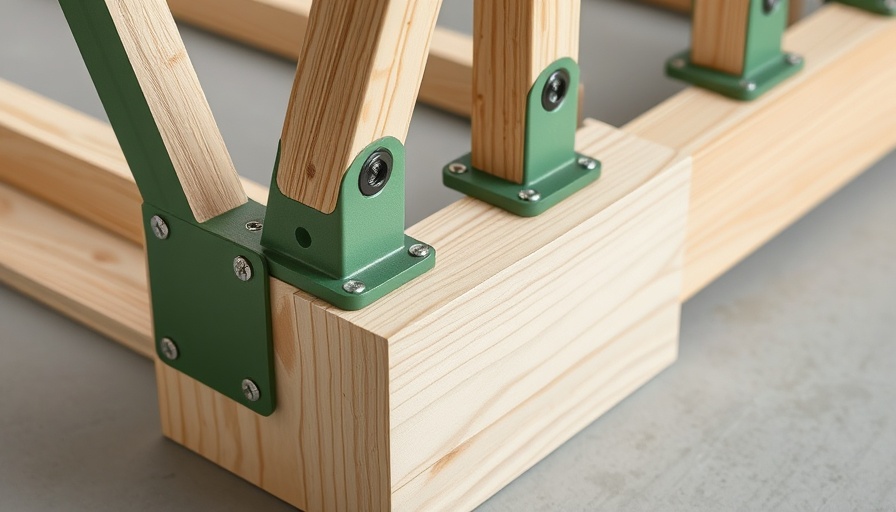
Revolutionizing Sustainable Construction: Wood Takes Center Stage
As the construction industry evolves to meet the needs of environmentally conscious homeowners, wood construction technologies are reaching new heights. This shift is not just about aesthetic preferences; it's a crucial step in addressing sustainable living. This article explores the recent advancements in wood construction, showcasing the benefits and innovations that are making timber a go-to material for modern homes.
The Benefits of Wood Construction Technology
Wood has long been celebrated for its warmth and natural beauty, but recent innovations have transformed it into a sustainable alternative to traditional building materials. Advanced wood treatment techniques now enhance the durability and resistance of timber to pests and weather conditions, making it a viable option for various climates.
Additionally, wood is a renewable resource, and when sourced from responsibly managed forests, it significantly reduces carbon footprints. This makes wood an attractive choice for environmentally conscious homeowners looking to minimize their environmental impact while still creating a stylish, inviting living space.
Smart Technologies Enhancing Wood Structures
Modern technology is integrating seamlessly with wood construction. Innovations like cross-laminated timber (CLT) and engineered wood products allow for the creation of larger, more robust structures while maintaining sustainability. CLT, in particular, has gained recognition for its strength and efficiency, making it suitable for multi-story buildings.
Moreover, smart technologies are being incorporated into wood constructions to enhance energy efficiency. Home automation systems are being designed to work specifically with wooden structures, allowing homeowners to optimize energy use through intelligent climate controls, lighting, and insulation management.
Real-World Examples of Innovative Wood Construction
Several groundbreaking projects illustrate the potential of modern wood construction. For instance, the University of British Columbia's Brock Commons is one of the tallest timber towers in the world. Standing at 18 stories, it showcases the strength and versatility of CLT. This structure not only reduces carbon emissions during its construction but also serves as a beacon for sustainable architecture in urban settings.
Another notable example is the Earthship Biotecture in New Mexico, which uses recycled materials and incorporates natural wood elements to create energy-efficient homes. These projects highlight how innovative wood construction can meet modern demands while respecting the planet.
Future Trends in Wood Construction
Looking ahead, we can expect wood construction technologies to continue evolving. With increasing pressure to reduce carbon emissions and embrace sustainability, the construction industry is likely to see more regulations favoring renewable materials like wood. Additionally, researchers are likely to focus on developing even more durable and sustainable wood materials, making them suitable for a wider range of applications.
There’s also a growing interest in integrating community and nature into construction design. Many upcoming projects aim to establish green spaces intertwined with wood structures, creating environments that promote not only ecological balance but also community well-being.
The Emotional Connection to Natural Materials
For homeowners, opting for wood construction is often tied to an emotional connection to nature. The warmth and comfort that wood affords often resonate deeply within, creating spaces that feel alive and welcoming. It represents a commitment to responsible living, allowing individuals to take part in a broader movement towards ecological sustainability.
The aesthetics of wood can also enhance the sensory experience within a home, providing a calming backdrop that encourages relaxation and connection with the outdoors. This emotional layer adds significant value for those who cherish sustainable living and wish to create a unique atmosphere in their homes.
Conclusion: Choose a Path Towards a Sustainable Future
As we stand at the crossroads of technology and sustainability, wood construction emerges as a clear leader. For environmentally conscious homeowners, integrating these advancements into your living space not only benefits you but also contributes positively to the planet. Explore how modern wood construction can transform your home into a sustainable haven.
To stay ahead in this green revolution, consider the impact of your building choices on the environment. Whether it's building a new home or renovating an existing one, fostering a relationship with sustainable materials like wood is a step towards a better future. Think about what you can do today to create healthier living spaces for tomorrow.
 Add Row
Add Row  Add
Add 



Write A Comment